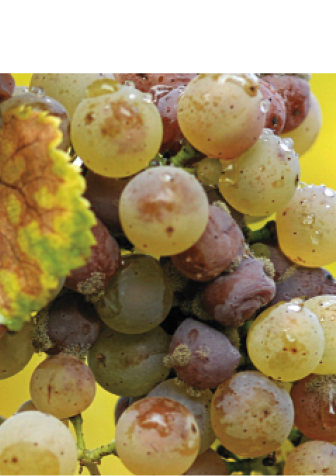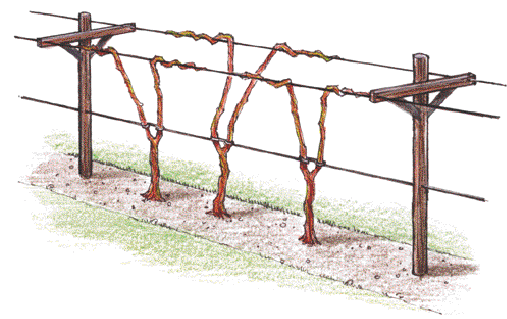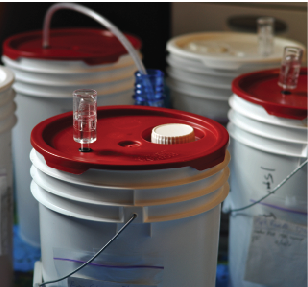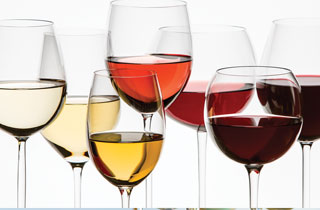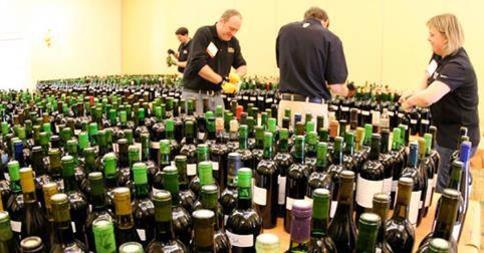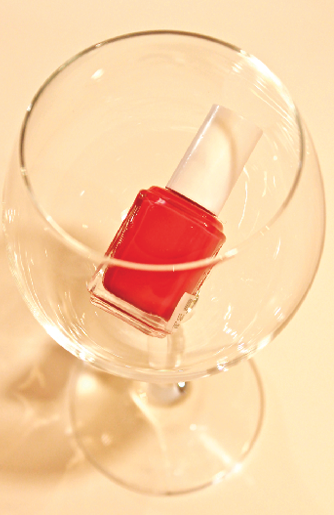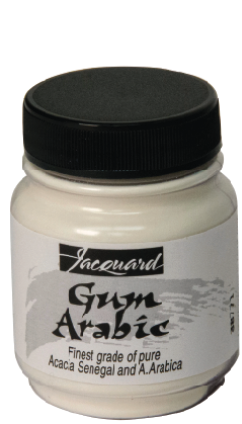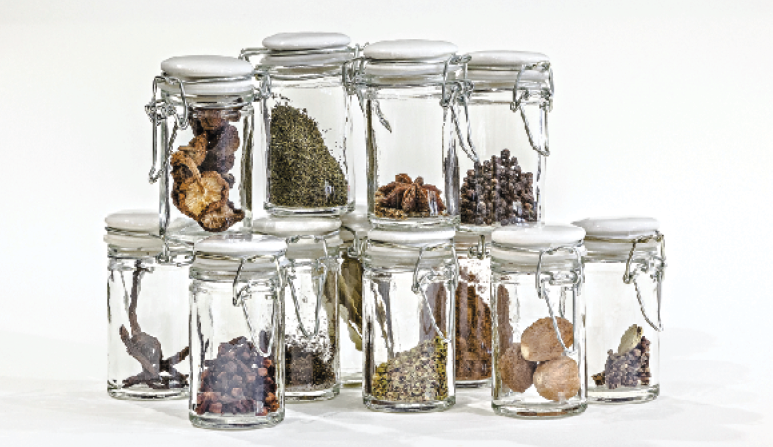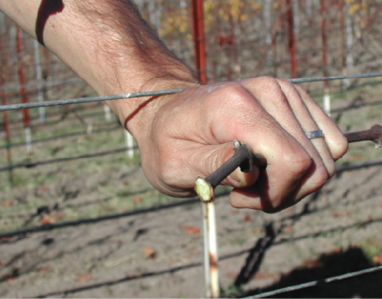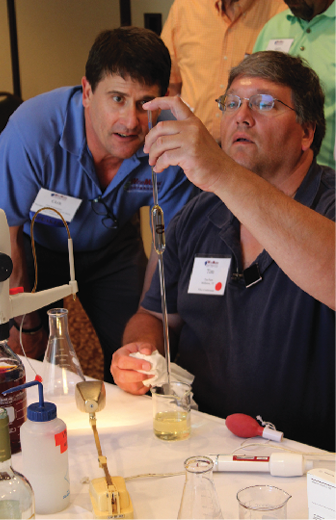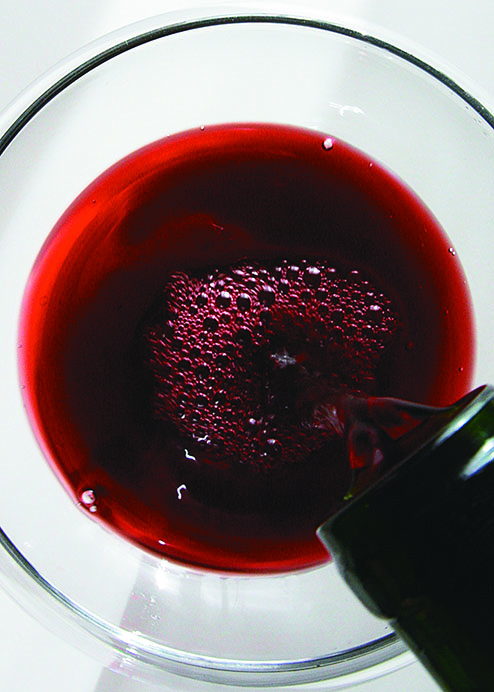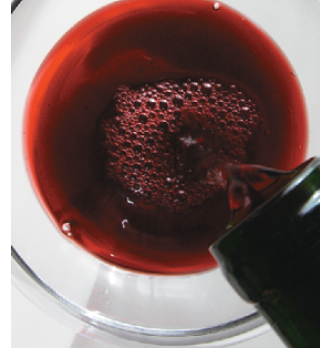Topic: Troubleshooting
White Film In My Wine Barrel
It sounds like you are doing the right thing. This is probably an aerophilic “flor” type yeast that is eating alcohol, and in the presence of air (if it was slightly untopped)
Adding Sambuca to Wine
Well I like your moxie. Sometimes it takes a little thinking outside the box to really make our beverages sing, and in your case (though it would be anathema to a commercial
Sniffing The Cork
You are more in the right here than your brother; when buying wine at a restaurant you really just smell and taste the wine. If the wine smells and tastes fine to
Dealing With Volatile Acidity
Not knowing any more information than you give above, it’s tough to make specific recommendations so I’ll start with the general ones. Whenever you suspect VA (volatile acidity, or the production of
Testing for MLF Completion
In the old days we would use paper chromatography to monitor the completion of malolactic fermentation (MLF). We dotted little drips of the sample wine, along with liquid standards of malic and
Detecting, Measuring, and Preventing Volatile Acidity
You’ve worked long and hard to craft that awesome red wine but now, you go down to the cellar to taste a sample out of the carboy or oak barrel to see
Vineyard Queries: A Year of Questions and Answers
This past year brought challenges and rewards for home vineyardists — and also a lot of questions for our vineyard expert Wes Hagen.
Troubleshooting Guide for Home Winemaking
A perfect stranger wanting to strike up a conversation about winemaking once came up to me and said, “Making wine is really easy. Don’t believe anyone who says otherwise.” Making wine is
Can Lysozyme Arrest MLF?
In my day job in Napa, California (as Winemaker for Garnet Vineyards as well as other consulting projects) I bottle plenty of “partial ML” Chardonnay every year and love the style. In
Understanding Oxygen and Oxidation in Winemaking
As budding winemakers, one important principle we heed is protecting juice (must) and wine from oxygen’s baneful effects. But then we learn that yeast needs a “little” oxygen for a good fermentation,
Soapy Taste In Wine
Though tough to define as it can smell different to everyone, there is unfortunately no wine lab analysis panel you can run that says, “Yessir, you’ve got an over-abundance of Ivory Soap
Volatile Acidity
An introduction into volatile acidity (VA) and how to avoid it.
Choosing Corks and Wine Closures
As I walked about the roomful of wine following April’s WineMaker International Amateur Wine Competition judging, I was reminded of how little thought is given to closures. Winemaking problems notwithstanding, this could
Higher Alcohol Off-Odors in Wine
Did you ever create a wine that seemed more viscous than your typical wine, or which may have exhibited heavier fruity odors, or perhaps a solvent-like smell? The culprits may well be
Stuck Fermentations
Unfortunately, there are hundreds of possible causes of stuck and sluggish fermentations, and sometimes, even after careful investigation, we still can never understand what the cause may have been. With Mother Nature
Top 10 Winemaking Myths
As in many practices with a longstanding tradition before the scientific knowledge caught up, the field of wine and winemaking has its share of myths, misconceptions, and sheer quackery.
Fermentation Troubleshooting with Wine Kits
The failure rate of wine made from kits is very low. Looking back at my database for the last 14 years and eliminating the weirder stuff (you simply would not believe how
Gum Arabic: Winemaking’s Secret Weapon
Gum arabic can do so many great things for your wines, from improving mouthfeel, making a thin wine taste fuller bodied, rounding out rough edges of grape tannins, increasing persistence of bubbles in sparkling wine, prolonging the action of metatartaric acid, to treating iron-induced oxidation problems.
Make Your Own Red Wine Aroma Sensory Kit
An aroma kit will help improve your ability to pick out aromas in a glass of wine. You can buy a kit for over $100, or make your own for a fraction of that.
Grape Growing Q&A
Grape growing questions answered!
Using Outside Labs to Run Analysis Tests on your Wine
There is lots of information out there about how to run various juice and wine analytical procedures at home if you want to do that. If you do not want to run
Tannin Additions in Wine Kits
Making kit wines doesn’t have to be only about following directions. Improve your wines by using tannin additions at various stages.
Oxidation in Winemaking
The early signs of oxidation are orange to brown colors developing in your wine. In white wine, the same exact wine (pictured above) can go from white (left) to brown (right) if
When Life Gives You Limes Make Wine
Very, very interesting. I have to say that the zest of 21 limes for three gallons (11 L) of liquid seems like a lot of lime-y-ness to me! I can only imagine
Oxygen Reduction in Winemaking
Oxidation gets a lot of attention in winemaking — and it should! WineMaker magazine has covered oxidation issues from several different angles over the past few years. While some presence of oxygen
